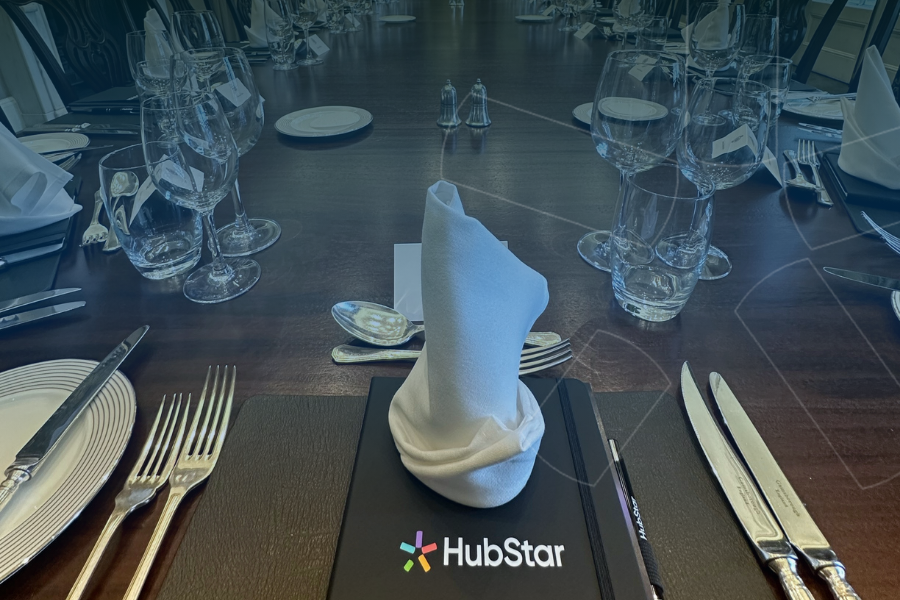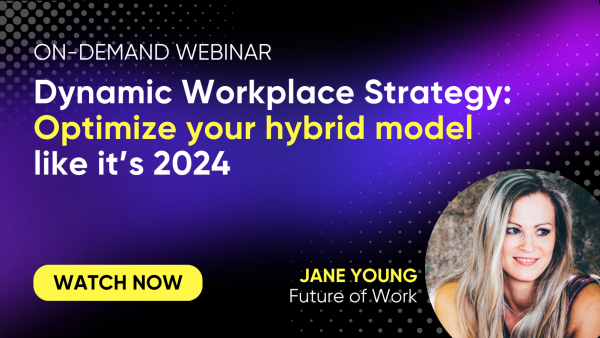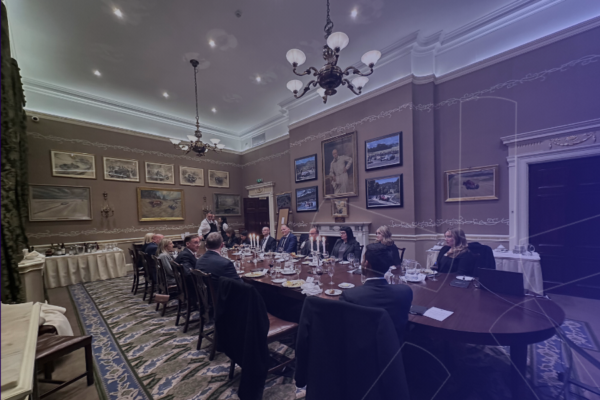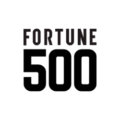9 Key Takeaways on Hybrid Work from HubStar’s Inaugural Workplace Connect Round Table

On July 11th, we welcomed 24 workplace, real estate and facilities management leaders to London’s prestigious Royal Automobile Club for a dinner and round table discussion on the future of hybrid work.
During a wide-ranging and free-flowing discussion, our attendees shared their thoughts on the future of hybrid work and the biggest challenges facing workplace leaders right now.
In particular, conversations focused on how technology can reduce the friction between on-site and remote work, amplify connection and creativity and maximize workplace performance. Here are the top nine takeaways from the discussion.
Coordinating hybrid spaces, policies and people still has a long way to go.
Hybrid working is now a permanent fixture, yet isn’t quite coordinated in ways that benefit both employees and employers. Looking ahead, scheduling key personnel’s office presence, adapting office spaces, and enabling employees to understand each other’s intended work locations are effective ways to align people and places.
But in spite of the work still to be done, it’s important not to forget how massively beneficial hybrid work has been for employers. One company reported £12 million in savings since implementing hybrid working.
Looking at where office space fits into hybrid coordination, changing space functionalities and sizes is top of mind. Companies that integrate local cultures and are better coordinated in determining which tasks are better suited for home versus office environments.
Tracking the success of the hybrid workplace means measuring the subjective.
Long-term lease commitments present challenges in adjusting space portfolios, especially with low office attendance. Organisations in areas as busy as Manhattan are only seeing occupancy levels of 25%, even on Tuesdays through Thursdays.
Although organisations are moving towards smaller real estate footprints in the future, there’s no one size fits all. One of our attendees rightly pointed out that in some cases, increasing the ratio of collaborative to individual workspaces will actually require more space.
This opens up the question of what metrics workplace leaders should be using to measure success. The tried-and-true metric of cost per square foot is now shifting to workplace experience per person. But how can we measure such a subjective metric?
Measuring the success of office spaces opens up the age-old issue of meeting room conflicts and conundrums. Even before the pandemic, there never seemed to be enough of them. Today, it isn’t always clear if meeting room problems are caused by insufficient quantity, the wrong types of rooms, or processes and etiquette not being up to standards.
At a higher level, our attendees agreed that traditional ways of managing, measuring and improving office spaces won’t cut it anymore. The most innovative workplace leaders are beginning to merge traditional space management with cognitive space management, which considers employees’ perceptions of the spaces around them.
HR is evolving into the link between the physical workplace and employee retention.
HR’s influence on workplace strategy is undergoing a transformation, with some FM teams now reporting into HR. The term “HR” is becoming obsolete in many organizations, and being replaced by titles like Head of People, Talent Management and more.
One attendee shared a surprising figure – 70% of CEOs are concerned about talent retention, emphasising the need for real estate strategies that enhance employee satisfaction, reduce recruitment costs and maximise company competitiveness over the long term. As a result, offices are increasingly being redesigned to more resemble homes, incorporating plants, artwork, and quiet spaces to create a comfortable work environment.
Magnet vs. mandate – pick one or pick both?
In a company-wide survey of employees at one attendee’s organisation, 61% indicated they’d quit if mandated back into the office. A number like this may come as an unpleasant shock to many, but illustrates the need for difficult conversations between leadership and employees to address tensions around returning to the office. Trust between these groups has eroded since the pandemic, with leadership paranoid about employee productivity without clear ways to measure it. One attendee commented that organisational leaders are seeking an outcomes-based approach to measuring success against objectives, but this does require a major change in terms of how organisations manage and communicate with their people.
One attendee noted that empty offices are not seen as a good indicator of business performance by investors, and as a result, some leaders are responding in kind by enforcing more mandates.
Leaders have an opportunity to lead by example: if they want more people in the office on Mondays and Fridays, perhaps they can start by attending the office on these days?
The office is now competing with the home, and providing free coffee and breakfast sandwiches simply does nothing for staff when weighing up whether to come in or not. Providing curated experiences that people want to be a part of and join, can be a good enabler for organisations that want to encourage people to come in.
Another attendee commented that the office is where innovation happens, and the joy of working is where great minds are brought together. Creating an aspirational working environment requires connecting culture with a high performing workplace. This is a challenging thing to get right, which is perhaps why mandates are seen as an ‘easy quick fix’ that don’t have the impact workplace leaders originally intended.
On-demand webinar: Dynamic Workplace Strategy
Optimize your hybrid workplace like it's 2024

Psychological safety in the workplace has been steadily declining since the pandemic.
Our attendees agreed that micromanagement and disengagement have become the status quo for many firms. But an innovative workplace requires ingrained cultural and behavioural values of speaking one’s mind, suggesting new approaches, and voicing dissenting opinions in a productive way.
In environments that lack psychological safety, innovation comes grinding to a halt and people keep themselves safe by doing the bare minimum. The challenge facing us now is how to turn this around and give employees the autonomy to make their own decisions.
Hybrid workplace tech can bridge the generational gap.
Gen Z: they watch Netflix with the volume up and the subtitles on, they can’t stand meetings that go on for more than five minutes, and they’re starting AI companies with their friends in university. But it turns out these new ways of communicating and next-level multitasking are positive things. One attendee commented that it was scientifically proven that watching TV with the subtitles on make you more intelligent.
The attendees commented that the variation in needs and requirements across the generations will continue to be a challenge for organisations. Hybrid working has opened up a plethora of workplace approaches, and one size cannot fit all. Therefore, creating a workplace that caters to the distinctive needs of various generations with their own requirements will be inherently challenging.
AI: Trusty assistant, not a threat.
The same goes for AI in the workplace. Worrying about roles becoming obsolete because of AI is an overreaction. When Excel went mainstream, some predicted that accountants would become unnecessary. Did that happen? Au contraire.
Our workplace leaders cited numerous examples of AI making decision-making faster. One attendee commented that smart sensor solutions were applied to cleaning rotas and the delivery of services on an as-needed basis, which drove significant cost reductions.
Other examples included generating fire regulation alerts when overcrowding thresholds are exceeded, closing off underutilised areas of buildings by shuffling employees into other spaces. Other examples are using AI and machine learning to prompt workplace leaders for other events, such as not having sufficient numbers of first aiders and fire wardens in specific locations. The outcome is a better building that is self-aware, reduces risk and prompts workplace leaders to correct issues faster.
There was also a noted split in the group between companies where AI was banned for fear of data leakage, with the other half seeing AI being adopted cautiously and with company approved systems and technologies. There remains a huge hurdle to be overcome around how to harness this technology in a way that does not jeopardise company confidential data.
Nothing works without cross-functional hybrid policies and rules.
Workplace tech that aligns people, places and policies has a lot of boxes to tick.
It needs to be flexible enough to support multiple complex hybrid work policies, intuitive enough to take away commute regret, but straightforward enough that it’s ready to go as soon as possible. Not to mention accommodating multiple regions and languages.
When aligned with the dynamic, fluid realities of today’s hybrid workplaces, tech can help organisations strike the right balance between individual autonomy, team cohesiveness and workplace performance.
But all our attendees agreed on one thing. Without a cross-functional team carefully crafting the right rules and policies, tech is just a bandaid.
This cross-functional collaboration is where the challenge lies. Without it, hybrid work policies are going to be one-dimensional. Bridging the gap between teams that have only started working together over the last few years is the next big hurdle facing workplace leaders.
Does technology augment creativity and social connection, or hinder it?
Video calls and instant messages are useful, but no replacement for the creative potential of in person interactions. Digital overwhelm is all-consuming, with people bombarded with meeting requests, video calls, instant messages. One attendee commented on how a newly released technology allows you to send your ‘Avatar’ to a meeting in your place to record what is said and perhaps ask questions of the audience.
Asynchronous work enables people to work across borders and time zones, which has been a benefit to organisations.
But has the human experience been lost as a result?
One attendee commented that no matter how good virtual and augmented technology becomes, it will still not replace fully the experience of two great minds coming together. Relationships created in person can be sustained virtually. Whilst this is not always possible, it does remind us that we want to collaborate with other people on a shared purpose. Perhaps that is the best approach for organisations: focus less on mandates and more on creating that shared vision and purpose that enables people to come together and achieve great things.
“It was a truly engaging evening, and I thoroughly enjoyed the thought-provoking discussions. The questions raised about workforce dynamics and hybrid working were particularly insightful, highlighting the complexity of this topic in today’s workplace. The debate from multiple perspectives was one of the most stimulating discussions I’ve attended this year.”
Want to be part of the next Workplace Connect Round Table? To get on the wait list, email Joe Harris at jharris@hubstar.com.
Share this post






















